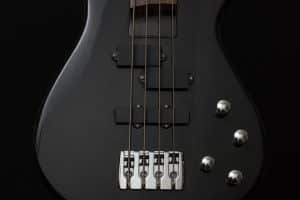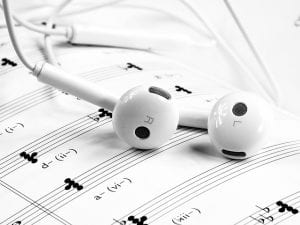Music Licensing & Music Copyright 101
Feels as long as an actual college course...
 When it comes to copyright, there are few areas a complex, archaic and complicated as music licensing and music copyright.
When it comes to copyright, there are few areas a complex, archaic and complicated as music licensing and music copyright.
However, in the digital age it’s also one of the most important. Unlicensed music is one of the most common reasons for Content ID matches on YouTube. Through Spotify and other streaming startups it’s become one of the most important copyright issues for the tech industry. Finally, it’s a field that more and more artists are striking out on their own in, often with little idea how licensing works.
As such, it’s worth taking some time to do a quick primer on how music licensing and music copyright works. Though it’s a surprisingly complex area of copyright, with two separate copyrights to consider and half a dozen licenses, the broad strokes can be explained very simply.
With that being said, here’s the basics of licensing and copyright when it comes to the music industry.
A Tale of Two Copyrights
 Though it’s easy for a listener to think of a song as a singular work, most musical works are actually two separate works, each with the own rules, licenses and considerations.
Though it’s easy for a listener to think of a song as a singular work, most musical works are actually two separate works, each with the own rules, licenses and considerations.
The two works are:
- The Composition (Publishing): This is the part of the song that is written down. It includes the notes on paper, the lyrics, the arrangement and anything else that can be viewed with the eyeballs.
- The Recording (Master): This is the actual sound recording itself. It’s the part that can be contained in the MP3 file. Anything you listen to is considered part of the master.
Though the two works are often owned the same person, they are very often owned by two different people. For example, the song Crazy by Patsy Cline was actually written by Willie Nelson. That means that, while Patsy Cline’s estate (or her label) owns the rights to the recording, Willie Nelson controls the publishing rights.
This also means that, for many uses of a song, you have to get at least two kinds of clearances. If you wanted to use Crazy in a TV commercial, you would need permission from Patsy Cline’s estate AND from Willie Nelson (or at least those who manage their rights).
This is also true when you try to use a song in a YouTube video or stream it over a service like Spotify.
Even if you get someone else to sing or perform the song, you still would need an appropriate license for the composition to use it.
For musicians, this is important too. If you write and perform a song, you control the copyright on both. However, if you perform a cover you (or the venue if it’s a live performance) need to get clearance to do it and you will only hold the copyright in your specific recording.
This can play an especially large role in the process of creating music as collaborators on both the composition and the recording can be considered co-authors, giving them joint ownership of the work.
But that ownership isn’t worth much if you can’t license it. Fortunately, there are a LOT of ways you can license both musical compositions and musical recordings.
Licensing the Composition
 Though the sound recording may be part best known by the public, the composition is the most basic layer of the song and its licensing.
Though the sound recording may be part best known by the public, the composition is the most basic layer of the song and its licensing.
Pretty much any use of a song requires an appropriate license of the composition. However, as we’ll discuss in a minute, many of these licenses are compulsory, meaning that the rightsholder can not say no.
The different type of composition licenses are:
- Public Performance Licenses: The public performance license is paid whenever a song is performed publicly. This can include music over the radio, performed in a club, streamed online and so forth. These royalties are handled by performing rights organizations (PROs), in the U.S. the biggest are ASCAP and BMI. Though the license isn’t technically considred compulsory, both ASCAP and BMI are under strong consent decrees that require them to grant licenses to anyone who attempts to negotiate a rate.
- Synchronization (Sync) Licenses: Sync licenses are licenses that are paid whenever someone takes the song and places (or syncs it) it into an audiovisual work. For example, music in a film’s soundtrack or in a TV show requires a sync license. This license is usually negotiated directly with the copyright holder, meaning either the composer or their publisher.
- Mechanical Licenses: A mechanical license is paid to the composer of a song every time that the song is copied and sold in audio-only format. It also is required when a song is streamed on an interactive digital service such as Spotify, though this is an issue currently debated. So, if you create a cover of a song that you intend to sell on a CD, you must pay a mechanical royalty. However, that royalty is compulsory and is currently set at 9.1 cents per copy for most songs.
- Print Licenses: A print license is a license paid to the composer whenever their composition is printed. This means when the physical composition is reproduced rather than a recording of the song. For example, such a license is paid by publishers of sheet music collections. For artists, the most common issue is putting lyrics of songs they cover in liner notes or online. These licenses are typically negotiated directly with the copyright holder, meaning either the composer or their publisher.
The result of all of this is that, while the recording is what most people hear, the composer/publisher has a great deal of rights in the song that they can license and profit from in many different ways.
Simply put, outside of fair use and public domain songs, there’s no way to use a song without licensing the composition, making it a critical part of the music licensing picture.
Licensing the Sound Recording
 In contrast to composition licensing, which has a wide variety of different license types, licensing a sound recording is more straightforward. However, that doesn’t mean that it’s easier or cheaper, just that there are fewer license types to consider.
In contrast to composition licensing, which has a wide variety of different license types, licensing a sound recording is more straightforward. However, that doesn’t mean that it’s easier or cheaper, just that there are fewer license types to consider.
To that end, when licensing the sound recording, these are the licenses to be aware of:
- Master License: A master license is a license to use the master recording in just about any capacity. Whether you want to to use it on a compilation CD, use the song in a film or even just use a sample of it in a song. This license is obtained directly from the copyright holder, usually either the artist or their record label, and the price depends on what it is you want to do with it. Every use case is different with a master license.
- Public Performance License: Until 1995 there was no public performance right for sound recordings. While there still isn’t one when a song is played on terrestrial radio, webcasts and digital transmissions, such as Pandora and Sirius XM, do have to pay a royalty. The license to do so is a statutory license, with rates set by the copyright royalty board at the U.S. Copyright Office, and the royalties themselves are managed by Soundexchange.
Beyond that, the only other major wrinkle is that pre-1972 sound recordings are currently not covered under federal copyright protection. Instead, they are covered under state law and may have a different set of rights.
In relation to music licensing, one of the key issues is whether pre-1972 sound recordings have a public performance right. A battle between Flo & Eddie of the Turtles and SiriusXM has shined a light on this and, in a multi-state fight, the courts have been largely favorable to the artists but still split.
Still a new act aims to harmonize their rights and bring balance into music licensing when it comes to pre-1972 sound recordings.
For modern recordings, since few of the licenses for sound recordings are compulsory, licensing a recording can be very expensive. To get around this, many licensees simply have someone else cover the song so they only have to deal with the rights to the composition.
Still, for performers, these licenses are incredibly important both to their income and to their ability to protect their work.
Bottom Line
Music licensing can seem incredibly complicated but it really isn’t. Yes, it’s a menagerie of confusing language and terms, but once you understand that every song is two separate works and that both works have all of the rights of any other copyrighted work, it becomes much easier to understand.
Once you grasp the separation of the composition and the sound recording, the rest of music licensing flows fairly naturally.
So, if you glean nothing else from this, understand that every song has two copyrights to consider and two sets of licenses that are needed to use it. Once you get that, finding the licenses that are correct for what you want to do is simple.
For musicians, this is the important thing to remember as well. When you write a song and when you record it, you are creating two separate works that are licensed individually. Whether this is a great opportunity or a great hindrance can depend upon how well you prepare going into the project.
Being savvy about music licensing doesn’t take a genius, but it does take preparation. But without basic understanding, that preparation is impossible.
Want to Reuse or Republish this Content?
If you want to feature this article in your site, classroom or elsewhere, just let us know! We usually grant permission within 24 hours.
